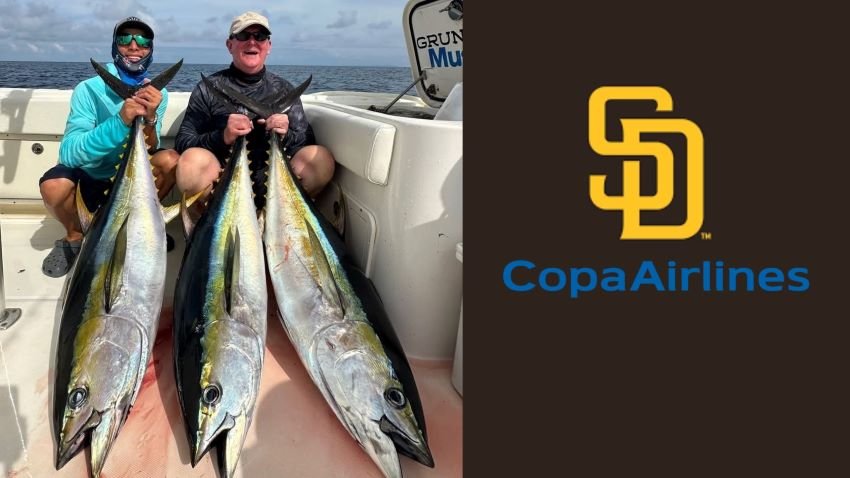Ten Things They Don’t Tell You Before Fishing in Panama
When it comes to travel, I am an over-planner and detective-like researcher. Before we go on a trip, I read every Tripadvisor review, watch dozens of YouTube videos, and even go to Google Maps to get the lay of the land. Hanna, on the other hand, likes to be surprised by what we find, perhaps because she can rely on me to gather and pass along the absolutely critical info.
Despite that ying-and-yang balance, and despite my thirst for pre-trip knowledge, I always manage to be surprised by at least a few things. Below are ten things that I learned in Panama, despite my copious efforts to be prepared. This is not a spoiler alert per se, but rather a series of pleasant warnings that will help you enjoy your trip….and yes, you definitely want to go.
There Will be Blood
Tuna fishing involves gaffs and fish with a sky-high metabolic rate. As they hit the deck, blood flies everywhere. You will get blood on you and your clothing – it’s inescapable. Don’t wear your custom Gucci slippers or silk shirts on the boat. They will get ruined. And be prepared for the mate to hose you down and help rub out the blood stains – he’s not molesting you, he’s making sure that the stains don’t set.
Slip Sliding Away
With all of that blood and fish slime on the deck, and with the need to make rapid movements to stay on top of a bulldogging fish, there’s a pretty good chance you’ll slip and fall if you’re not careful. You don’t want to crack your head open anywhere, but especially not when you’re staying on a remote island. Even if you generally prefer to fish barefoot or in your regular gym shoes, invest in some deck-gripping boat shoes to maintain your balance.
Beatdown City
I don’t care how many 10-pound bass or 50-inch muskies you’ve caught, these fish are in a different class (even those that weigh the same). They’re solid muscle and they don’t give up until there’s blood on the deck (see above). Eat your Wheaties, get in shape, and prepare to push yourself to your limits to catch them. The juice is worth the squeeze.
Spin to Win
I’ve always wondered if high-end spinning reels costing hundreds of dollars are worth the extra bread. Now I know – they are for tuna. We used Shimano Saragosa and Twin Power eggbeaters to subdue rampaging tuna that ate our poppers, and without the butter-smooth drags we would not have been nearly as successful.
Radar Rules
At the 2011 Bassmaster Classic in New Orleans, several competitors added radar units to their bass boats to make the two-hour run to Venice in the fog. That seemed to me to be courting danger and soured me on the use of that technology on boats. In Panama, however, I saw its true value. Captain Shane Jarvis used his Simrad radar not only to dodge squalls, but also to find diving birds that were outside of our range of sight, and in turn to get on top of the tuna quickly. We caught fish that we’d never have found with just our eyes and sonar.
Squidward in the House
We saw some of the famous “bait balls” that the tuna and dolphins corral and then feast upon, but they’re not the only bait source in these waters. A lot of the tuna we caught were spitting up small squid. How does that affect the fishing? It spreads the tuna out a bit, as the squid don’t gather in the same tight formations. Still, they ate just about every color and size of popper we threw at them — feeding fish in this case were aggressive fish.
Panama City Rocks
I’m not sure why, but I expected Panama City to be run down and sketchy, but at least in the areas we saw it was exactly the opposite – modern, bustling and safe. We enjoyed a walk downtown from the Hilton and later saw the famous canal on the way to dinner at an excellent oceanfront seafood restaurant chosen by our friend Elliott Stark. I would’ve liked to have spent an extra day there if it wouldn’t have impacted our time on the water.
You Need Dollar$
While Panama’s official currency is the Balboa, it is tied directly to the dollar, and every place we visited took American bills or credit cards. We paid for our COVID tests and tips in dollars. That meant no time wasted in messy currency exchanges, no wondering if we’d been ripped off on the exchange rate, no leftover coins. Just another thing that simplifies the whole experience.
You Won’t Get Tired of Eating Tuna
I’m not a big sushi fan, but fresh, high-quality yellowfin sashimi is like candy to me. When Chef Eddie laid out platters of it, next to matching platters of the same tuna seared and bowls of poke, I was in heaven. Happy hour was at about 4:30 or 5:00 pm every day, and I really could have skipped dinner at 7. Even when we had otherworldly shrimp, steak and other fish, I craved that tuna. Luckily, if you plan ahead you can bring some home….and we did.
You’ll Have to Go Back
Someday I might find a type of fishing that I don’t find compelling, or one that I actually dislike, but this ain’t it. In fact, this may be the most exciting form of the sport that I’ve ever tried, and I’ve tried a lot of them. While our first trip to Panama was successful beyond expectations, I left without achieving all of my goals, or sampling even a fraction of the species that live there. We’ll be back sooner rather than later, and you need to put it on your bucket list.









